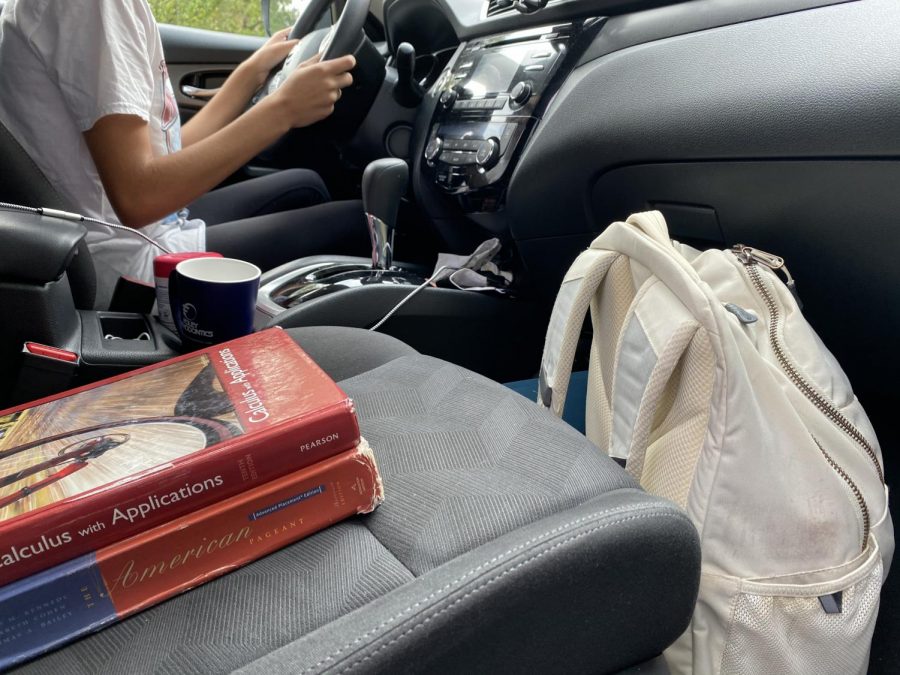Driving green
How carpooling helps to reduce emissions
Photo by Hannah Etienne
Many students drive themselves to school, but carpooling with other students reduces harmful greenhouse gas emissions.
28% of total US greenhouse gas emissions come from transportation, according to the Environmental Protection Agency (EPA), making it the largest contributor to US greenhouse gas emissions.
In a suburb like Lake Zurich without public transportation, carpooling is usually the best option for reducing those emissions. Carpooling not only reduces pollution, it also cuts congestion, and consequently, travel time, according to the Green Team Carpool Project.
“I think that carpooling is a great idea for students,” Julie Gyarmaty, AP environmental science teacher, said. “If every student is driving, clearly, there are a lot more emissions than if half the students are driving. And even better if the students are all taking the bus. Of course, this year things are a little different, but in normal circumstances, yes, the more carpooling we would have the better; the fewer emissions we would have.”
The amount of emission reduction does also depend on how far one student is driving to pick up multiple students. If a student was driving a longer distance to pick up other students than they would each drive individually, then it would be inefficient, Gyarmaty says. Moreover, taking the bus is the most sustainable option for those outside of the walking/biking range of the school.
“I know that the older students, juniors and seniors in particular, don’t really like to take the bus. So in that case, I think that carpooling with other students who live […] in your neighborhood would be the most eco-friendly way,” Gyarmaty suggested for students that live too far away to walk or bike.
One such student, Katie Fitzgerald, senior, gets to and from school by car. She says carpooling is a great way to reduce emissions.
“I have noticed carpooling eases congestion and speeds up the traveling process […] Fewer cars on the road means cleaner air and less transportation emissions,” Fitzgerald said.
Those emissions are mostly made up of carbon dioxide, a greenhouse gas that causes global warming. According to the EPA, “the average passenger vehicle emits about 404 grams of CO2 per mile.” Greenhouse gases like CO2 cause a range of negative environmental effects, from health conditions to photochemical smog.
“In urban areas, harmful automotive emissions are responsible for anywhere between 50 and 90 percent of air pollution,” according to HowStuffWorks, a site that explains thousands of topics. In addition to carbon dioxide, automobiles also produce comparably small amounts of methane, nitrous oxide, and hydrofluorocarbon emissions. Although released in smaller amounts, these gases have a higher global warming potential (GWP) than carbon dioxide. Carpooling reduces the emissions of these gases significantly if enough people do it.

Hannah’s third year on staff is her first year as Spotlight Editor. She spends more time talking to her cats than practicing her flute as a band member....

